Although introduced to the market only five years ago, the Vietnamese chocolate brand Marou has won the hearts of connoisseurs around the world. In an article published in the New York Times, reporter Laurence Obsborne described the world’s most exquisite chocolate bars which are made in a factory on the outskirts of Ho Chi Minh City as “the best chocolate you have never tasted”.
The creation of the Marou brand name is attributed to the passion and creativity of a Franco-Japanese named Samuel Maruta, who first came to Vietnam as a school teacher, and Vincent Mourou, a Franco-American former advertising executive. Having a mutual love of the country and a passion for the local cocoa beans, they decided to quit their jobs and travelled to the Central Highlands and Mekong Delta regions of Vietnam where they worked with Vietnamese farmers at cocoa farms. By the end of 2011, Marou Faiseurs de Chocolat was officially established by the co-founders: Maruta and Mourou specialising in making “single cru” (chocolate made from beans specific to one geographic region that gives the chocolate its distinctiveness). In the three short years since Vincent and Samuel started Marou, they have become known as one of the best single-origin, handmade, chocolate makers in the world.
Their ambition was to create a chain of self-contained chocolate production, from processing cocoa beans to packaging and selling chocolate bars. This production form is called “bean-to-bar” in English, but it had not yet been carried out in Vietnam.
After spending years experimenting with cocoa beans from six provinces across Vietnam, they discovered that cocoa beans in each region have their own distinctive flavour despite the same cocoa percentage for the bars they used.
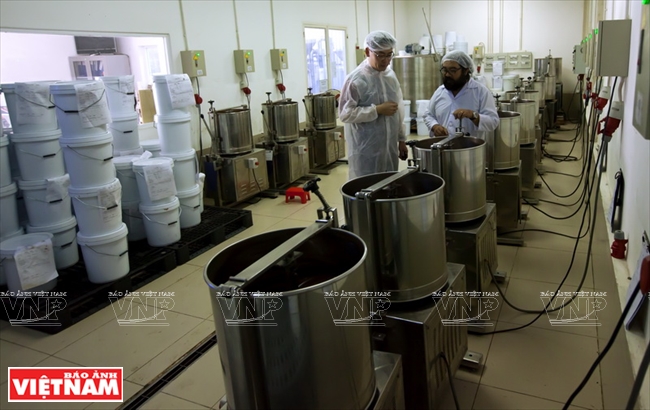
Part of Marou Chocolate’s factory in Thu Duc District, Ho Chi Minh City. Photo: Dang Kim Phuong/VNP

A foreigner works in Marou Faiseurs de Chocolat in Thu Duc District, Ho Chi Minh City.
Photo: Dang Kim Phuong/VNP
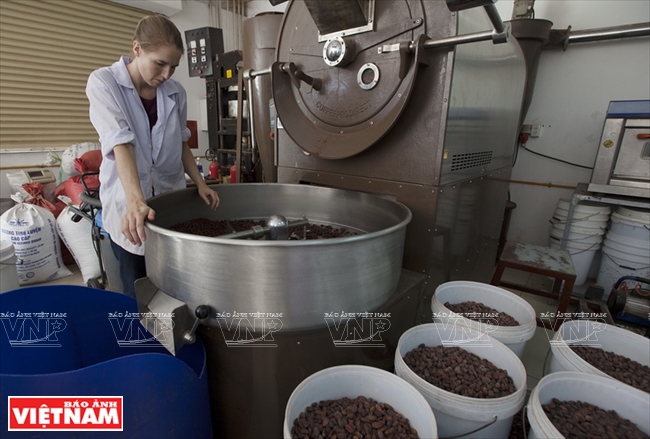
Cocoa beans are roasted before their shells are removed. Photo: Dang Kim Phuong/VNP
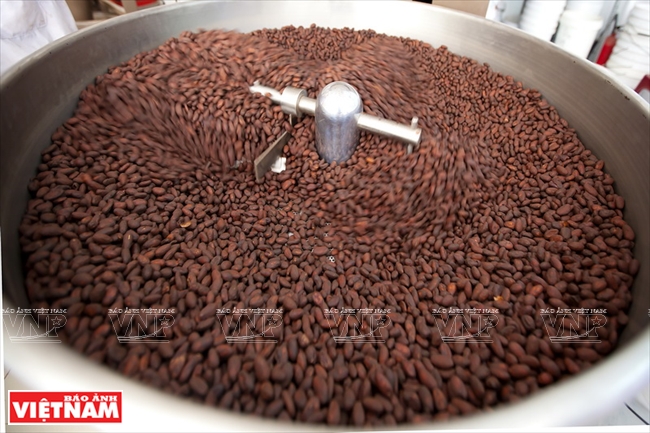
Roasting cocoa beans. Photo: Dang Kim Phuong/VNP
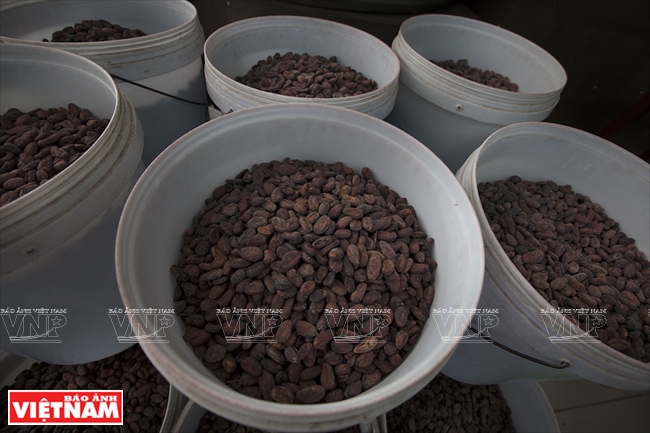
Dried cocoa beans. Photo: Dang Kim Phuong/VNP
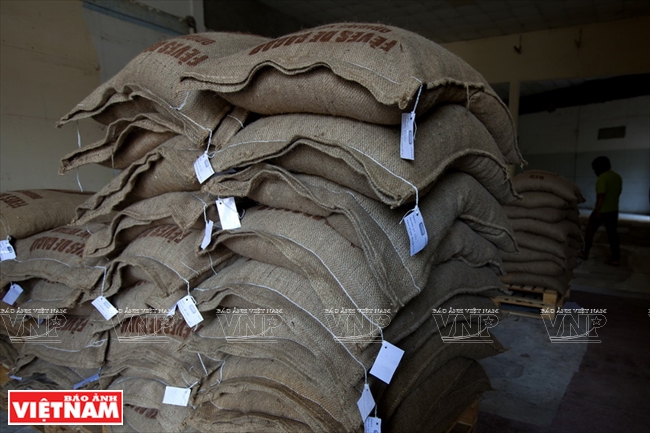
Standard dried cocoa beans are used to produce Chocolate Marou. Photo: Dang Kim Phuong/VNP
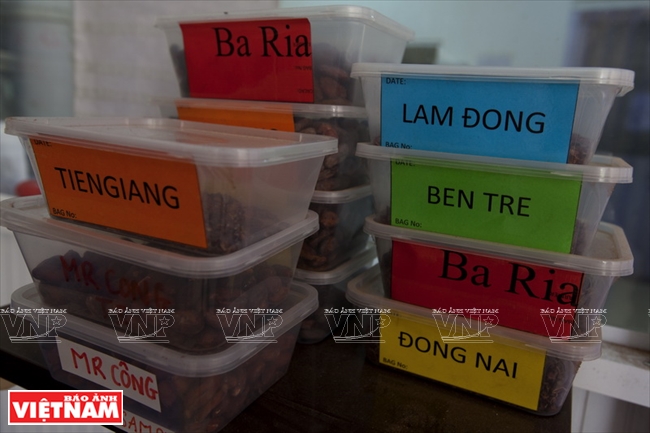
Cocoa beans from different areas. Photo: Dang Kim Phuong/VNP
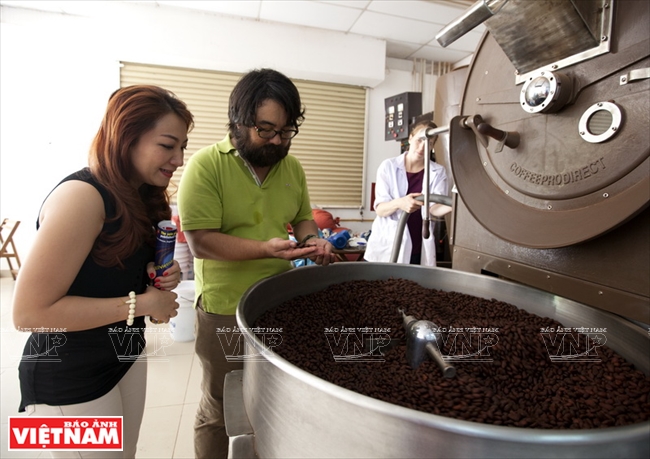
Samuel Maruta, a co-founder of Marou Chocolate, examines the quality of cocoa beans.
Photo: Dang Kim Phuong/VNP |
Therefore, they have chosen recipes that enhance their unique qualities. Highlighting the origin of a product according to French culture, Samuel and Vincent named each type of chocolate after the name of localities where cocoa plants are cultivated.
So far, the French company has created six types of chocolate products, with the content of cocoa ranging between 70% and 78%. The cocoa beans are chosen from different localities such as Dak Lak, Lam Dong, Ba Ria-Vung Tau, Tien Giang, Dong Nai and Ben Tre. Each has its own distinctive flavour. For example, the Tien Giang 80% features a rich mocha aroma and a silky smooth texture and the Ba Ria 76% is sweet and offers a stronger taste with a long finish. There are also the Dong Nai 72%, the Lam Dong 74%, the Ben Tre 78% and others.
Marou’s chocolate has a particular complexity and variability, because unlike most chocolate makers, they can create theirs from beans they select carefully at the source. This means they have control of everything, from farm to bar. Therefore, their handmade chocolate products are more expensive than industrial ones, but the quality and flavour meet the needs of high-end markets in Vietnam and compete with international products. After winning a promising award in 2012, Marou won gold, silver and bronze medals at the London Academy of Chocolate.
At Salon du Chocolat 2013, the world’s largest chocolate exhibition in Paris in 2013, 400kg of Marou chocolate were sold in four days.
At present, besides providing for the foreign community in Vietnam, the company sells its products to France, Sweden and England. Their products are also present in the US, Canada, Australia, New Zealand, Thailand and Japan.
Samuel said that if harvested on time, Vietnam’s cocoa beans have a high quality the same as products from South American countries or Madagascar. In many countries, especially in France, customers are surprised when discovering that Marou is made from 100% Vietnamese materials.

Cocoa fruit harvested from Vietnam’s farms is used to produce famous Marou Chocolate.
Photo: Dang Kim Phuong/VNP
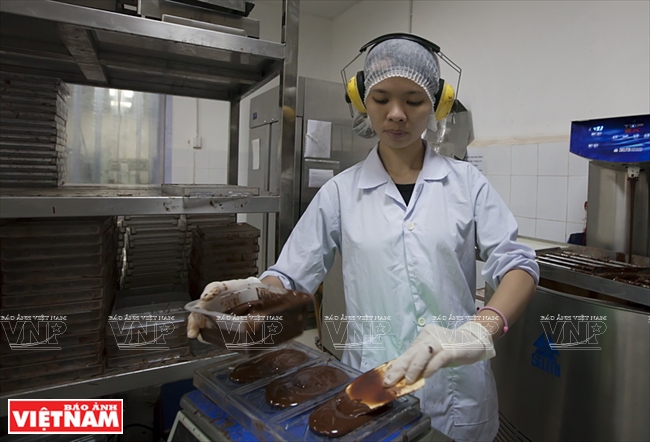
Manually moulding chocolate. Photo: Dang Kim Phuong/VNP

Packaging bars of Marou Chocolate. Photo: Dang Kim Phuong/VNP
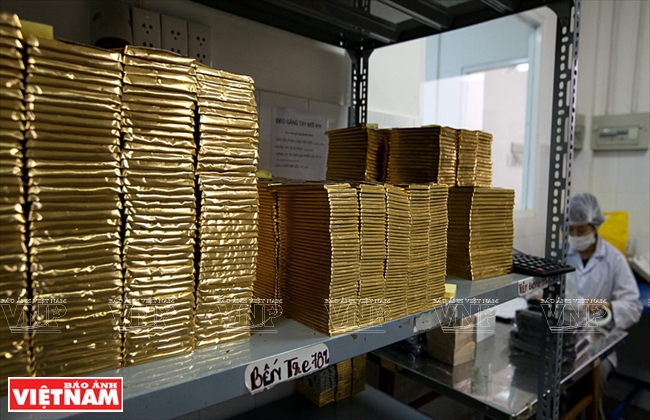
Chocolate Marou Ben Tre 78% is made from cocoa grown in Ben Tre Province. Photo: Dang Kim Phuong/VNP
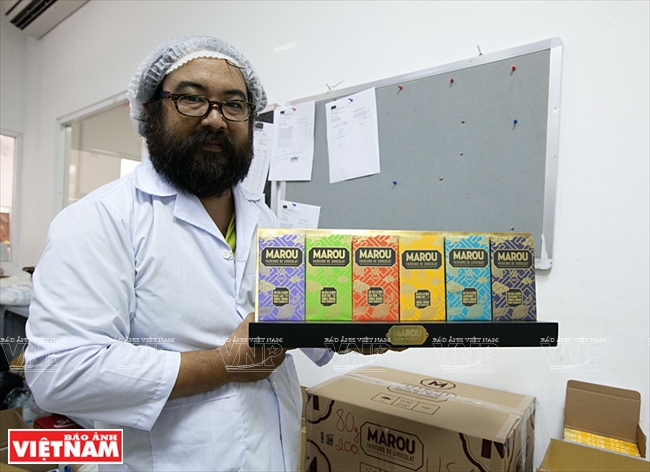
Ông Samuel Maruta người đồng sáng lập công ty Marou Faiseurs de Chocolat với thương hiệu Chocolate Marou.
Samuel Maruta, a co-founder of Marou Chocolate, and bars of Marou Chocolate.
Photo: Dang Kim Phuong/VNP
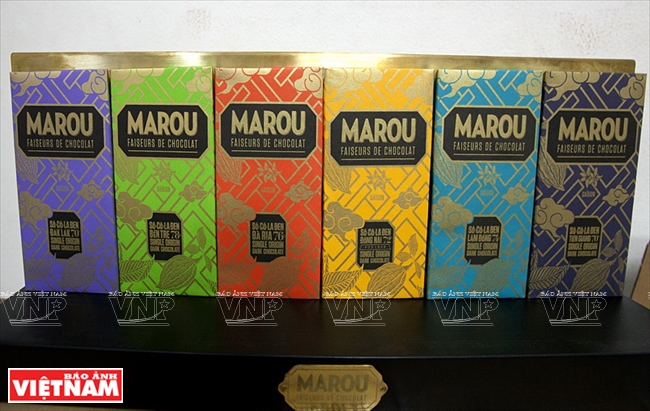
Marou Chocolate has beautiful and impressive packaging. Photo: Dang Kim Phuong/VNP |
Marou chocolate is actually recognised as a high-end product which affirms its position in the market. The special brand is sold at famous shops and supermarkets in the world such as Harvey Nichols in the UK and Whole Foods in the US.
Despite possessing an ideal climate, Vietnam has never been known for its production of quality chocolate. Now, thanks to two chocolate-obsessed expatriates, Vietnam has the chance to become an internationally recognised hot spot for gourmet cocoa production.
Story: Nguyen Vu Thanh Dat - Photos: Dang Kim Phuong